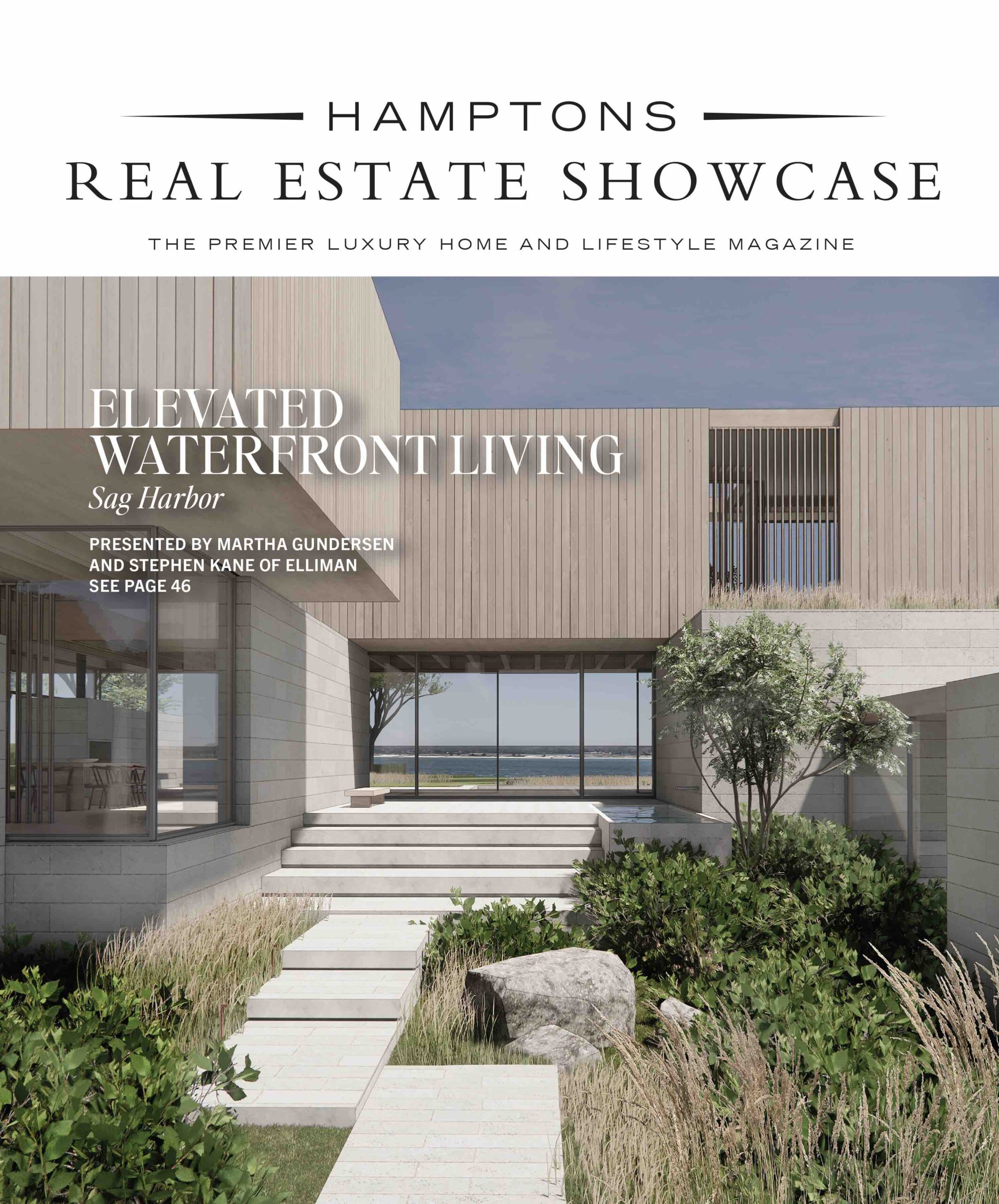Decks are part of many – if not most – Hamptons homes. But patios also have their place, providing outdoor living space, whether adjacent to the house or set away from it. A patio helps to connect the house to the landscape, and because it sits at ground level, a patio feels more like part of the garden than part of the house. A patio can feel formal or informal, depending on its shape and the materials used to construct it. If you want to add a patio to your property, think about how you will be likely to use it and at what time of day when you plan where to put it. The most popular place for a patio is just outside the house, often with doors opening from a walkout finished lower level. This kind of convenient location, directly off a room that you use often, will make your patio a comfortable extension of your living space. Equip your patio with comfortable seating, outdoor lighting, a table for dining al fresco and a grill, or even a complete outdoor kitchen, and add some colorful plants or perhaps a fountain, and an awning or umbrella, and you will naturally gravitate to it in pleasant weather. Make it a place where you want to be.
Consider which side of the house is the best location for your patio. A western exposure can be perfect for outdoor dinners or cocktail parties because it will soak up the afternoon sun and stay warm longer in the evening. It may, however, be unpleasantly hot in the afternoon. Conversely, a patio with a northern exposure will be cooler and not so sunny – a better choice for lunch.
 Photo: by Daniel Gonzalez | Designed by William D’Agata Outdoor Living Concepts Design & Build
Photo: by Daniel Gonzalez | Designed by William D’Agata Outdoor Living Concepts Design & Build
There are other places to consider putting a patio besides near the kitchen or lower level rec room. You might want to have a small private patio off a first floor master bedroom, with access through French doors or sliders. Screen the patio with lattice or trelliswork and you have a cozy, protected spot where you can relax with a cup of tea. Away from the house, create a little patio hideaway in a flat, shady spot in the center of the garden, or in a secluded corner behind a screen of shrubs – a perfect place to immerse yourself in a good book. You can also turn an awkward, little-used space such as a narrow side yard or driveway into a patio.
Installing an awning or other covering over the patio will enable you to use it on rainy days if you want to. For summer use, you may want to incorporate some sort of overhead shade structure, perhaps an arbor or pergola. Train vines on the arbor to create a lovely, leafy canopy that shields you from the hot summer sun and lets in soft, dappled light.
If you will be using the patio at night, you will need lighting. A patio where you entertain will probably need to incorporate a serving area, a grill and perhaps a more extensive outdoor kitchen. Electrical outlets will be necessary, too. You may also want to include a bar. Comfortable, serviceable furniture will add to your enjoyment of the space. To use the patio earlier in spring and later into fall, include an outdoor fireplace, a fire pit or chimenea for heat. Many styles are available.
A patio can be a fine place for a fountain or other water feature. A small pool or fountain, or even a simple water spout, enhances the tranquil serenity of a formal patio.
Having garden beds around the patio enhances its connection to the landscape. Repeat plants from other beds and borders in planting areas close by the patio to further unify the property. Installing planter boxes or raised beds will emphasize the lines of a formal patio, in addition to providing space for plants. Or you could create a formal look with a low, clipped hedge running along the perimeter. Germander, santolina, lavenders and littleleaf boxwood can all be used for low hedges. Small trees are especially welcome near a patio, where they supply shade and greenery, and perhaps flowers, too. You might even construct a patio around one of your favorite trees and incorporate it right into the design.
















![Local landscapes, reimagined in oil 🎨 @patgarrityhamptons brings the beauty of the East End to canvas, capturing the emotion, atmosphere, and seasonal shifts that make the Hamptons so unique. Her creative eye doesn’t just inform her art, it enhances her real estate work too, helping clients see what’s possible and appreciate what’s already there. [link in bio]](https://hamptonsrealestateshowcase.com/wp-content/uploads/sb-instagram-feed-images/521901258_18522831946030135_2198226394962818798_nfull.webp)




